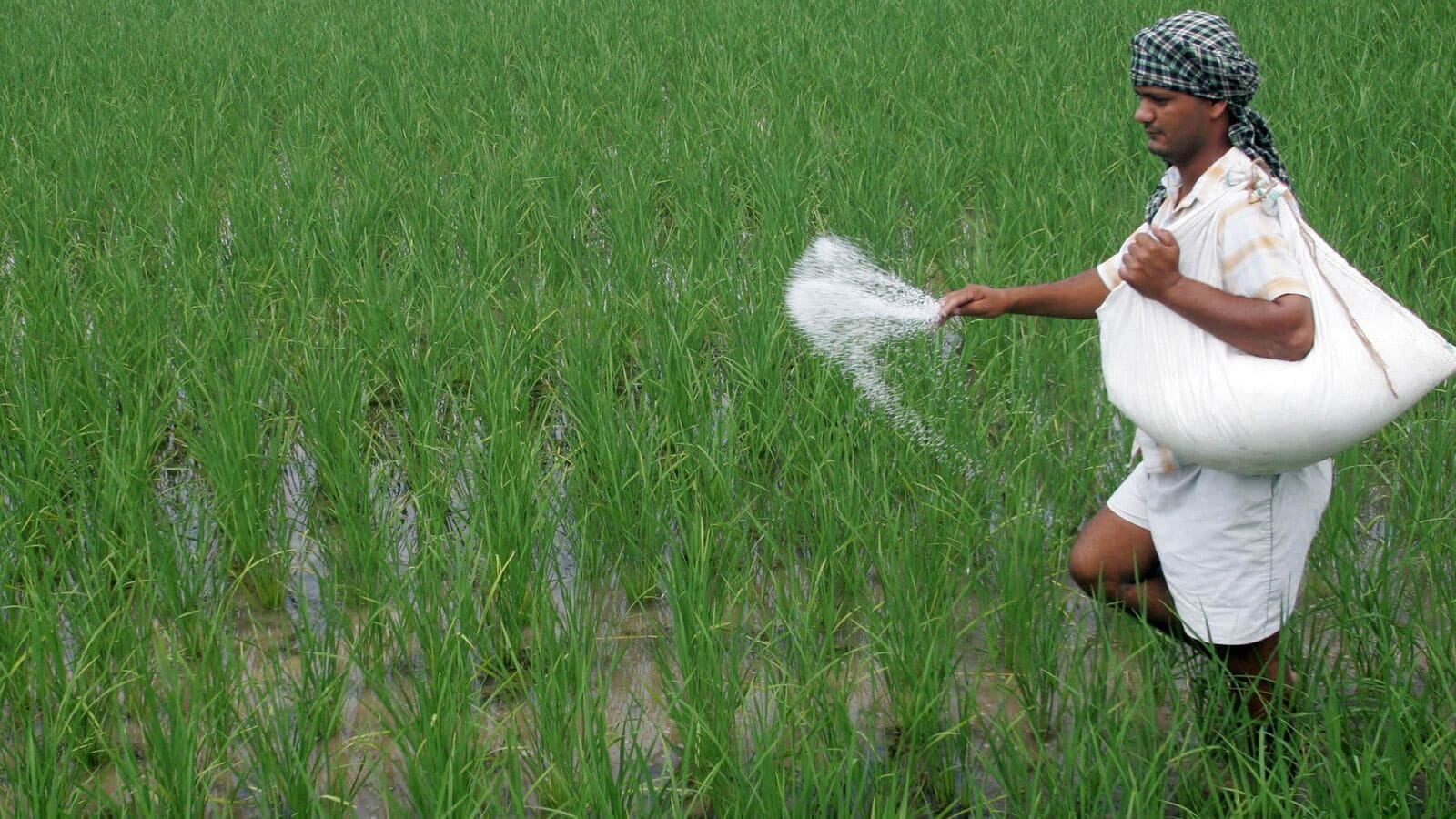
New Delhi: The fertilizer subsidy for fiscal year 2025 (FY25) is unlikely to be taken any higher than the budgeted ₹1.64 trillion, due to a fall in global fertilizer prices and the falling trajectory of oil and gas prices, two people aware of the matter said.
Fertilizers make up the largest subsidies after food.
“Fertilizer subsidies are unlikely to see higher allocations as the prices of urea and other key fertilizers have fallen much during the ongoing fiscal (as compared with the previous fiscals),” the first person mentioned above said, requesting anonymity.
“It is unlikely that the Centre will seek to increase fertilizer subsidies through supplementary demand of grants during FY25. The fertilizer prices are expected to stay at the current levels or fall lower, considering the falling trajectory of oil and gas prices,” the person added.
The prices of imported urea, diammonium phosphate (DAP) and muriate of potash (MoP), currently at about $350, $560 and $280 per tonne, respectively, have fallen by more than half in the last 12-18 months.
Also read | Cabinet approves ₹24,420 crore fertilizer subsidy for 2024 kharif season
India imports about 30% of its total fertilizer requirements, with a large chunk of it coming from Russia and Ukraine.
During FY23, the Centre’s subsidies on fertilizers rose to a record ₹2.51 trillion as global prices shot up after Russia’s invasion of Ukraine. The next year, the expenditure on fertilizer subsidies came down 23% to was ₹1.95 trillion.
However, during FY24, the subsidy spending exceeded its revised estimates by over ₹6,500 crore due to rising input and operational costs, on the back of higher natural gas prices.
“Fertilizer subsidy is important as the use of fertilizers helps in raising food production. With India importing about a third of its fertilizer requirements, global prices do impact the maths behind the fertilizer subsidies,” the second person mentioned above said.
“However, the plans to increase domestic fertilizer production will reduce the dependency on imports and bring down the Centre’s outgo towards fertilizer subsidies in the coming years,” the person mentioned above added, requesting anonymity.
Spokespersons for the ministry of finance and the department of fertilizers did not respond to emailed queries.
Import dependence
During FY24, the Centre imported 7.04 million tonnes (mt) of urea, spending $2.61 billion, lower than 7.57 mt in FY23, Anupriya Patel, minister of state for chemicals and fertilizers, informed the Rajya Sabha in August.
India, which imports urea mainly from Oman, Qatar, Saudi Arabia and the UAE, plans to completely end urea imports by FY26.
Meanwhile, the World Bank’s fertilizer price index has remained relatively stable in the June quarter, following a 20% annual drop in the March quarter. The index is 24% lower annually in the June quarter, primarily due to a significant decline in phosphate rock prices (-56%) and potassium prices (-17%).
Also read | India to sign long-term deal for buying key fertilizer input from Mauritania
“This broad weakness is due to improved production and lower input costs,” the World Bank said in a recent blog post.
“Compared to 2023, prices are expected to average lower in 2024 and 2025 but remain well above 2015-19 levels due to robust demand and some export restrictions (particularly from China) and sanctions (mainly Belarus),” it said.
“Upside risks to the forecast include potential increases in input costs, especially natural gas. However, a resumption of China’s exports and lower-than-expected crop prices could contribute to further declines in fertilizer prices,” it added.




